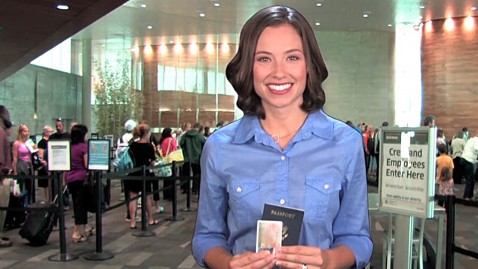There’s nothing like a Jetson-esque hologram to get an airport excited about helping passengers navigate their terminal and answer questions. They make great news stories. However, from a passenger’s POV, a pretend person just isn’t very helpful.
Think about it. You’ve just stepped out of a cab after a 45 minute journey to the airport in peak hour traffic. The sun is beaming down as you heave your luggage inside the terminal before you melt. You need a shower and a change of clothes. ‘Where’s the showers?’, you ask yourself. You don’t see a map but spot a sign for a help point. But it’s not just any help point, it’s a virtual assistant. A big giant blob of light with a smile, ready to assist. The instructions ask you to tap and talk for help. You ask for directions. It asks you to repeat because it doesn’t understand. You try again but it mistakes your question for something unrelated to what you need. By the time the virtual hologram gets it right you’ve asked a passerby and are on your way to the showers.
You see, there’s a number of things about virtual assistants and holograms that don’t really help the traveller.
- There’s a language barrier: While multilingual virtual assistants can be useful, we know in practice from using technology like Siri that accents make it hard for computers to decipher what we are saying. And depending where we are from we often have different words to describe different things.
- They create complexity when trying to find an answer: You shouldn’t need to learn or understand new technology to answer a simple question.
- They’re unapproachable: Unlike a printed map, virtual assistants may scare away those travellers who aren’t familiar with technology or aren’t as willing to embrace it as some of us might be.
- They’re costly to build and expand: Virtual assistants require physical hardware and installation, not to mention software updates to add new information. Changing the location of a bathroom in the system could be a costly bit of work.
- You need to be physically in front of it: Unlike a mobile app that a traveller can review before arriving at the terminal, you need to be at the terminal to use these types of help points.
A point of help, be it digital, printed or human, needs to answer only a few things well:
- Where do I find something
- How do I do something
- When do I have to do something
Holograms used as video guides, for example to display how to pass through security, may not be a bad idea. These types of user cases have proven to help travellers understand certain actions they need to undertake at an airport. They get noticed and require no interaction other than watching.
However, virtual assistants and holograms risk becoming the QR codes of support: loved by marketing teams but no one else, especially passengers. We need to be careful as we try to humanise ‘help technology’ that we don’t actually make it less human.

